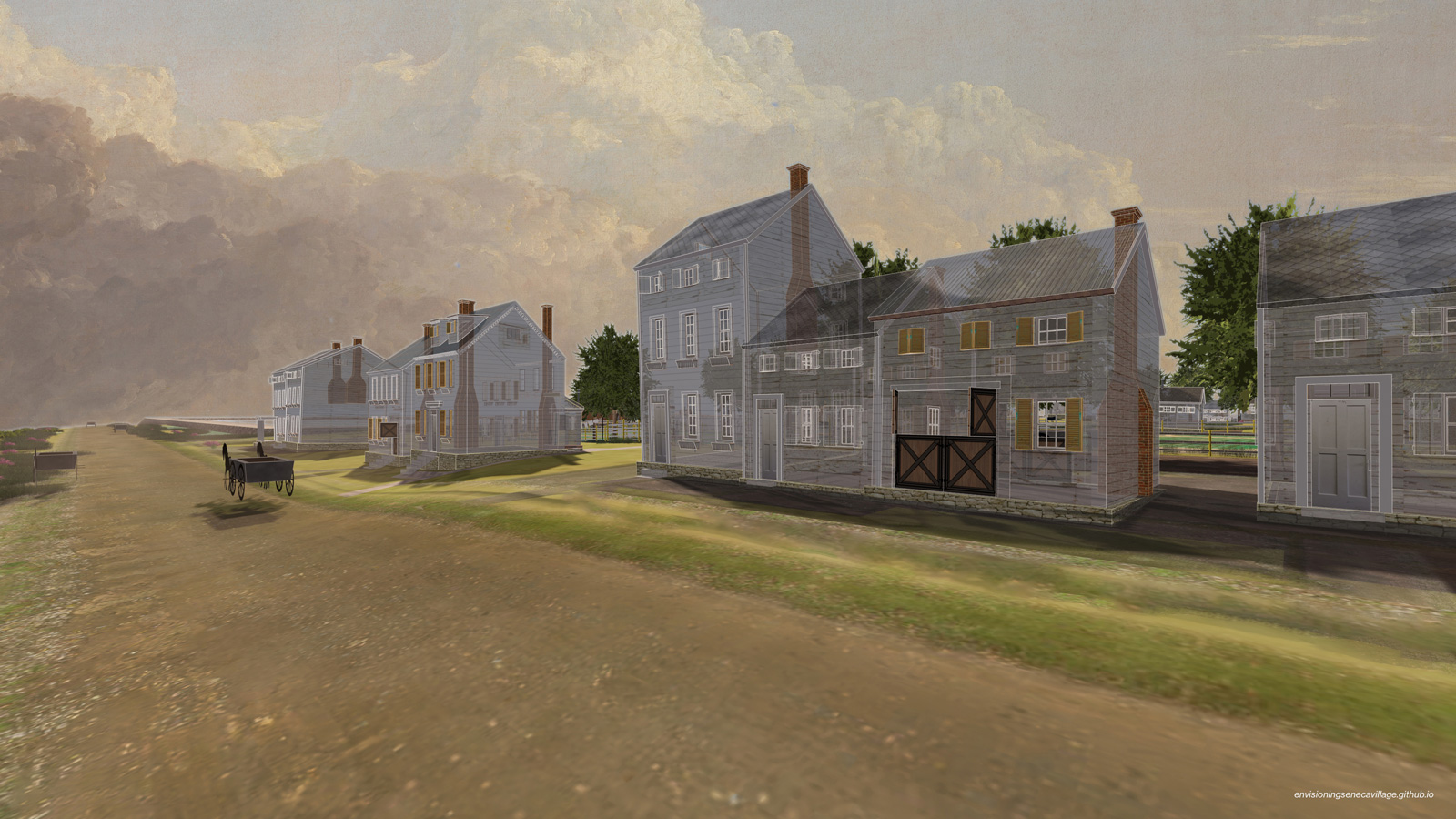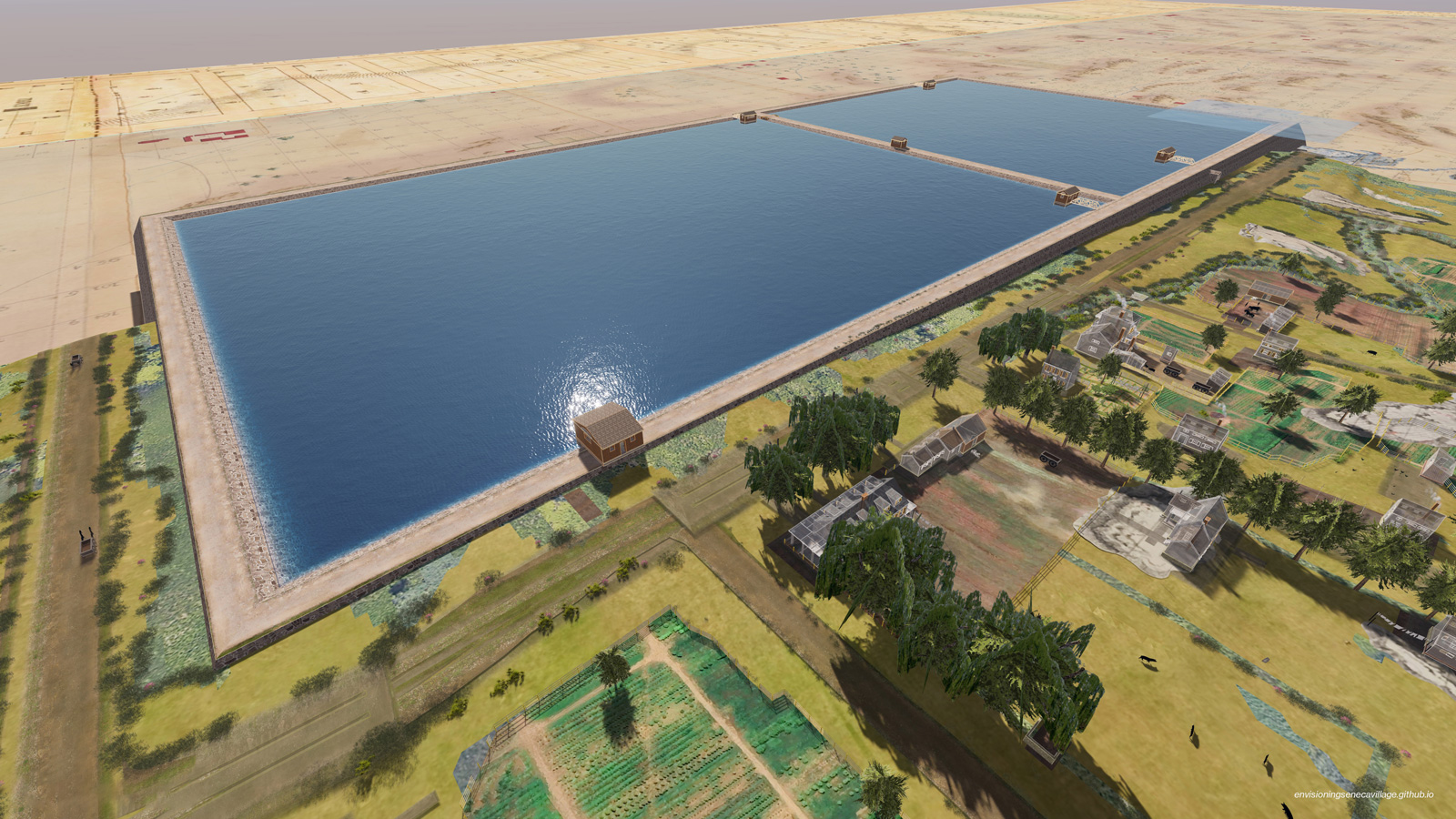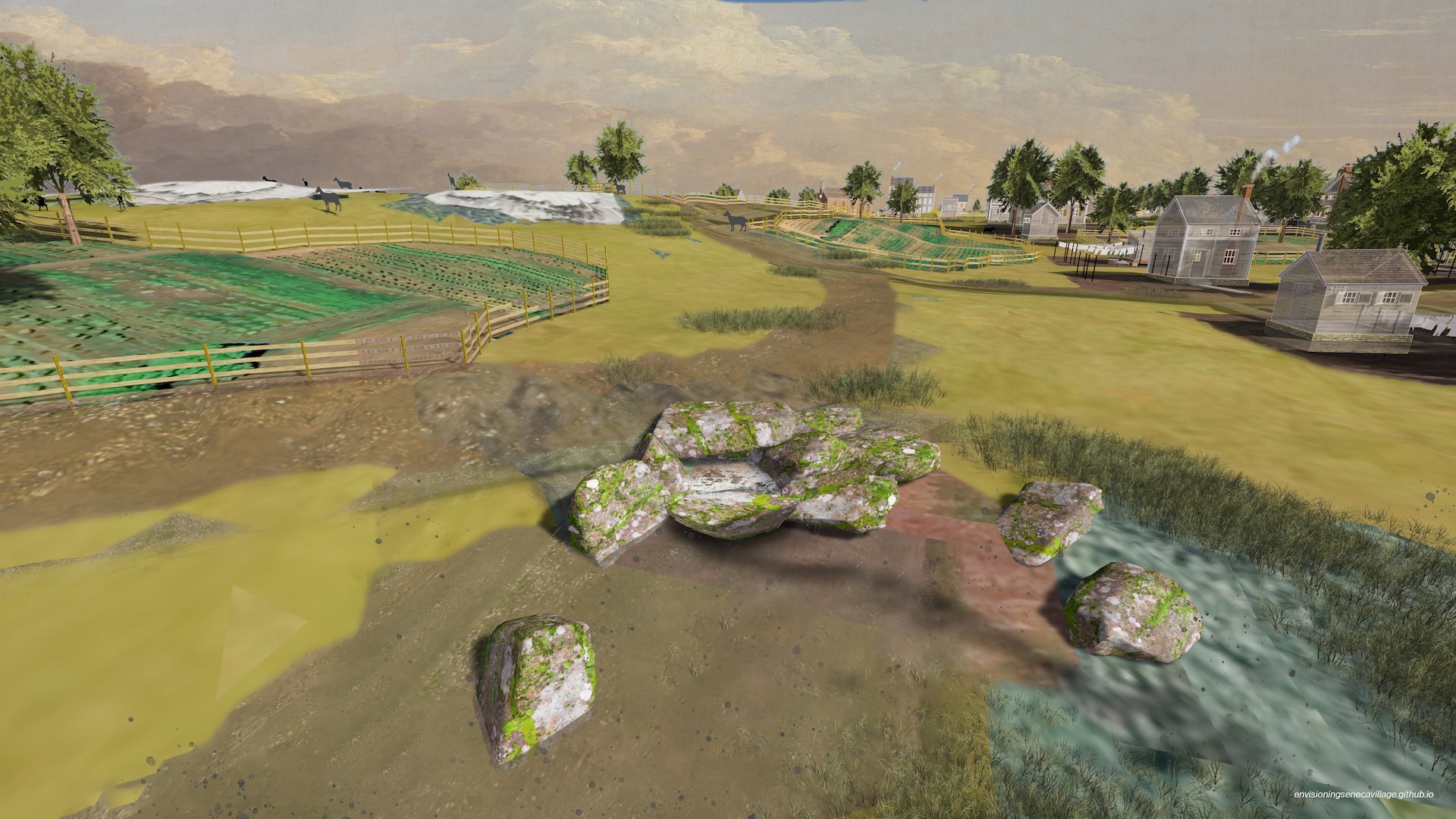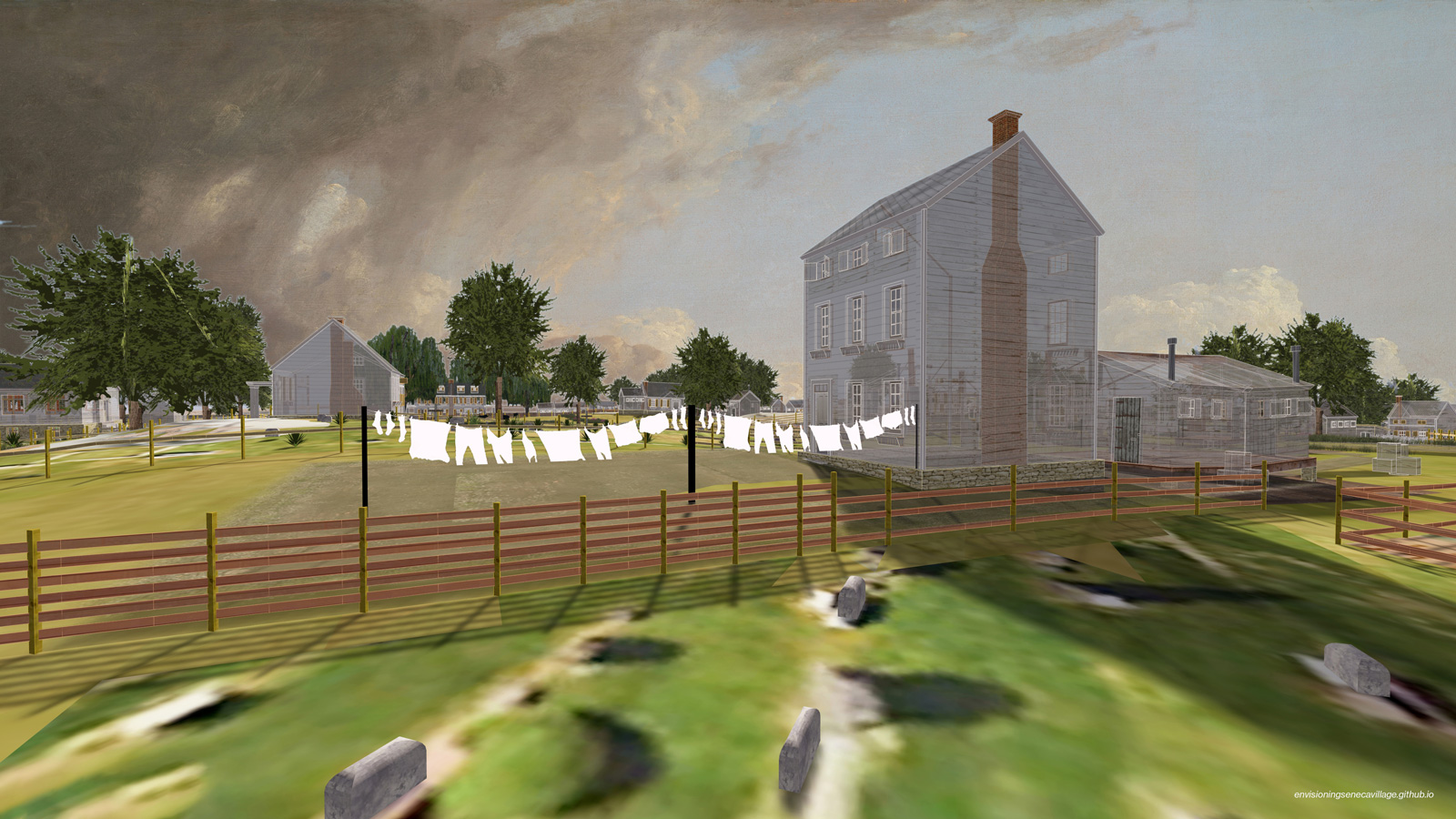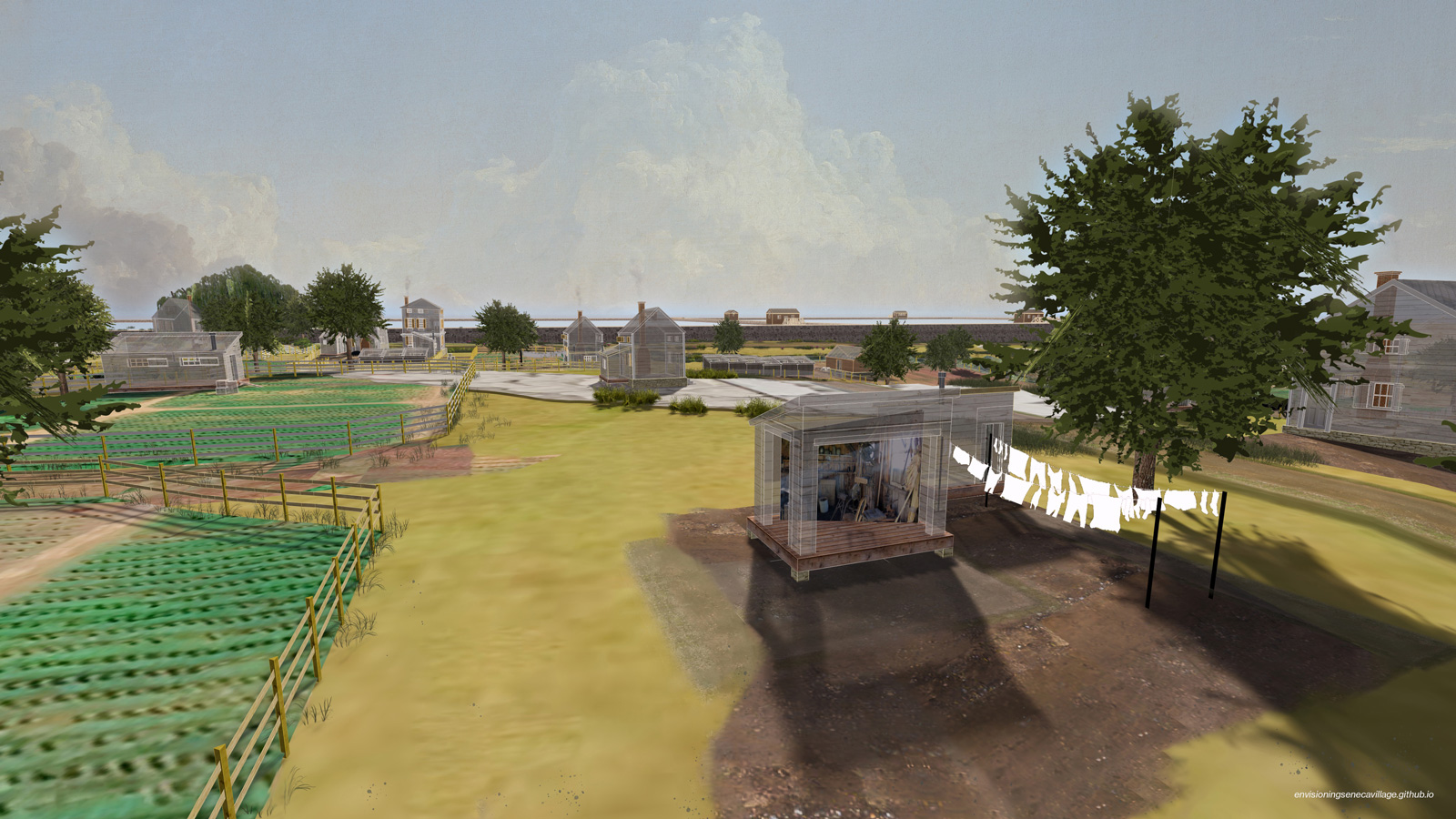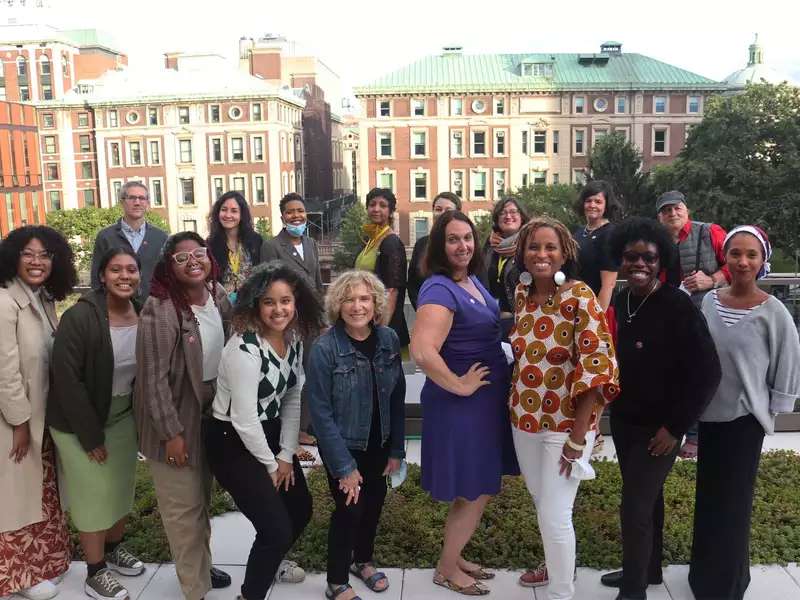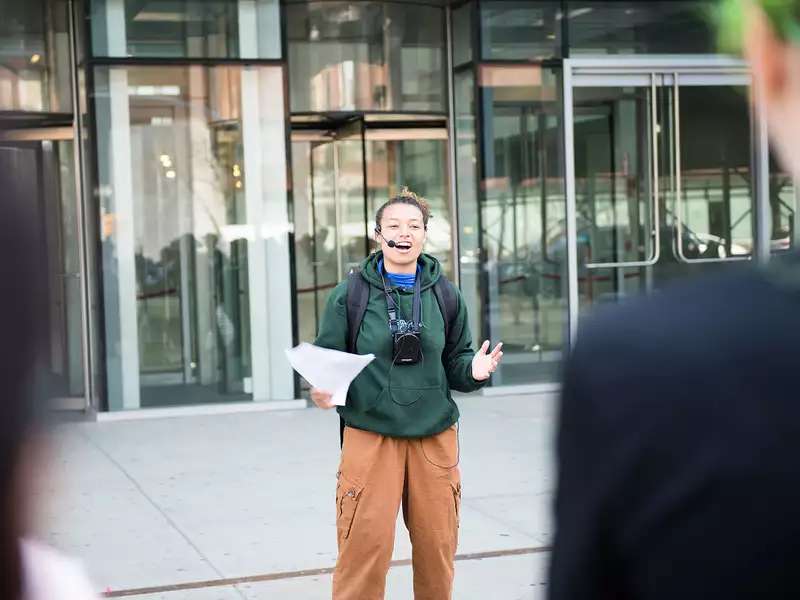
For over three decades — 1825 to 1857 — an approximately six-block stretch from about 82nd and 88th streets on what is now the west side of Central Park was home to Seneca Village, a thriving community that by 1855 consisted of at least 50 families, about two-thirds of them Black and one-third European immigrants, mostly Irish. Founded by African Americans, the village, which offered a safer environment than downtown, included three churches, a school, and a range of skilled agriculturalists. To live there was to be a part of a community that worked to a large degree because of the collaborative spirit of its inhabitants.
It is this same collaborative spirit that today allows the world to revisit Seneca Village — which was destroyed by the City of New York in 1857 to build the park — thanks to the joint efforts of four scholars, including Gergely Baics, Barnard associate professor of history and urban studies. Together, they launched Envisioning Seneca Village, an interactive 3D digital model of the area two years before its destruction. The website, launched on June 19 (Juneteenth), shows the community on a late spring day, complete with homes, churches, a school, trees, streams, and details down to chickens and toys that children there would have had.
“We did this project because we thought it was the right thing to do,” said Baics, about his collaboration with Meredith Linn GSAS’08, associate professor of historical archeology at Bard Graduate Center, Leah Meisterlin GSAPP’06, ’09, a cartographer and geospatial methodologist, and Myles Zhang CC’19, an urban historian and Ph.D. candidate in architecture at the University of Michigan. “We had the resources and the tools to do something that is meaningful for the public history of New York and this community. So we decided to do it.”
The seeds of the idea for Envisioning Seneca Village were planted approximately two years ago when Baics was working on a project with Meisterlin, his frequent collaborator.
“We were analyzing 19th-century self-built residential areas within New York, which included many ‘shanties and shantytowns’ in Manhattan,” explained Meisterlin. “We were pulling together our sources and thinking about the material and [thought], well, hold on, Seneca Village is always lumped into this discussion, and what we are finding through our mapping is just how unique and different from these ‘shanties’ it is. And through that [realization], this idea was born.”
To learn more about what distinguished Seneca Village from shantytowns, Baics and Meisterlin turned to Linn, a historical archeologist and former Barnard professor. Linn, who co-authored the 2018 archaeological site report of Seneca Village — with the archaeological project leaders, Barnard professor emerita Nan A. Rothschild, CUNY Graduate Center professor emerita Diana diZerega Wall, and historian Cynthia Copeland — is currently co-writing a book on the area with Rothschild and Wall. She shared a trove of data with Baics and Meisterlin and soon joined the project.
The team used a variety of historical records — including maps, New York census data, church and tax records, as well as letters of affidavit — and insights from the archaeological project to create the village’s virtual visualization. Maps from surveyors were particularly critical to the project, explained Linn, who referenced those made by Egbert Viele in 1855 and Gardner A. Sage in 1856.
“[Sage’s] job was to assess properties in order for the City to determine how much they would need to compensate landowners when they took their land invoking eminent domain [to build Central Park],” explained Linn. Viele recorded the topography. “So those two maps and the census records form the core of the visual and documentary evidence that we draw on.”
While it was one thing to have an idea and data, it was quite another to turn it into a 3D visualization. Enter Zhang, who created the digital village.
As there are no surviving photos or drawings of the village, Zhang’s representations had to rely on the data. Using the software Sketchup, Zhang integrated decades of historical and archaeological research with digital mapping methods, combining cartographic and social history with geographic information systems.
“Who writes history determines how certain communities and peoples and spaces are remembered. It’s really important for Seneca Village to be remembered as how the people who lived there experienced this place and not how other people describe it. And I think that using the tools of visualization makes that possible,” said Zhang. “Say the written word says that something is a shantytown. That’s what you believe, but when you have a visual of what this shanty looks like — well built and well maintained, with an orderly yard and garden, a shed filled with tools, and a sheltering tree — is that still a shanty? No.”
Beyond the visual representation of what life actually looked like in Seneca Village, the project uses text and annotations, said Baics, “to convey the vibrant life within the village” and to explain who lived in various properties as well as how public buildings — spaces of worship or classrooms for children’s education and adult literacy — were used.
It took approximately one year for the team to create Envisioning Seneca Village, with the help of research assistants Sarah Baybeck ’25, Maia Donald ’23, and Jesse Pearce ’24, as well as input from the Central Park Conservancy. An advisory board was formed, including scholars who have long researched the village, such as Columbia professor of history Elizabeth Blackmar and the aforementioned archaeologists, as well as Andrew Thomas Williams IV and Mareia M. Williams, descendants of Andrew Williams, the first landowner of Seneca Village. “The Williamses shared information from their own family history and their perspectives about how the village’s history is so important in the present and for the future. They really helped to make our visualization better,” said Linn.
These many minds were able to come together to create something historically groundbreaking. “So it really took a village to build this one single product,” said Baics.
This fall, the Central Park Conservancy began featuring Envisioning Seneca Village on its website and will offer some financial support for the project through a Mellon Foundation grant. “The rediscovery of Seneca Village as a pre-park community revealed a unique African American story within the context of one of the most celebrated public spaces in the world,” said conservancy historian Jessica Striebel MacLean. “Envisioning Seneca Village offers a window into the past that is particularly powerful as a means of revealing the long-obscured history of a marginalized community.”
Though the website is ready to be explored now, it is only the beginning. The site includes a downloadable PDF guide that people can use for a walking tour in the park and will have other updates soon. The team behind Envisioning Seneca Village and the conservancy are planning workshops with teachers about how the website can be used in middle school and high school classrooms. There are also plans to video interview many of the advisory board members, whom Linn called “amazing fonts of knowledge.”
“One thing I feel this project does really well is bringing together the varied strengths of people who have different skills, different personalities, different life experiences,” added Linn. “It shows how much can be accomplished when you bring together people who have differences — which speaks also to the spirit of Seneca Village itself.”
